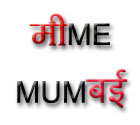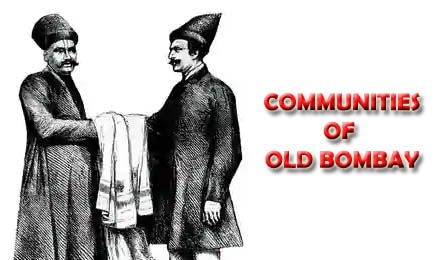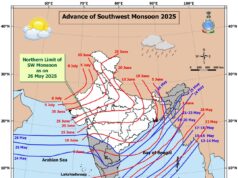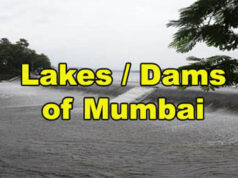The evolution of Mumbai as a island was from volcanic eruptions thousands of years ago and human habitation existed since the Stone Age. The Maurya Empire gained control of the islands during the 3rd century BCE and transformed it into a centre of Buddhist culture and religion. Later ruled by successive dynasties. Then came many rulers such as King Bhimdev in 13th century, Gujarat SUltanage Bahadur Shah, Mughals, Portuguese and Britishers.
During these period many people came from outside and settled on this island which was becoming important hub for trade. Kolis, Marathas, Pathare Prabhu’s, Parsis, Bene Israelis started settling here and made tremendous contribution to the growth of Bombay islands.
Below are the information of some communities who settled in Mumbai:
Kolis
The Kolis, who lived largely by fishing still continue to do so. The Kolis of Gujarat came from Kathiawar during prehistoric times.
Bhandaris
The Bhandaris are the next oldest inhabitants of Mumbai and served the English government most faithfully. The name Bhandari is derived either from Mandharak ( a distiller) or Bhandar (Treasury). The Bhandaris were either farmers or soldiers. The poorer among them were toddy tappers who operated liquor shops. Some of them blew trumpets, known as Bhongulees, and they also spoke Marathi. In course of time, they took to different occupations, owing to necessity.
Pathare Prabhus
The community of Pathare Prabhus is also one of the oldest that came to Mumbai from Gujarat during the time of the Silaharas in the 13th century. Except under the Portuguese, they always held high administrative jobs in the government. They amassed wealth and became property owners in the seventeenth and eighteenth centuries. They were the most advanced community and led the other Hindu communities in fashion and dress till the mid-nineteenth century.
Bhatia & Banias
The coming of the Bhatias and the Banias of Gujarat in the eighteenth and nineteenth centuries helped the rapid development of trade and commerce in Mumbai. The Kapol Banias came from Gogha and Surat. The Bhatias came from Kathiawar and Kutch about the beginning of the nineteenth century .
Shenvis, Sonars and Daivagnas
The other communities who migrated and have made an important contribution to Mumbai were the Shenvis, Sonars and Daivagnas. Dr. Bhau Daji Lad and justice K.T. Telang belonged to the Shenvi community. Jagannath Shankar Sheth was a Sonar.
Jains & Marwaris
The jains who came to Mumbai at the same time, were rich community and were engaged in trade and commerce. The Marwaris who came in the 19th century were initially mainly pawn brokers, usurers and money-lenders.
Muslims
The Konkani Muslims, known as Nawaits, came and settled here during the Muslim rule. The other Muslims included Arabs, Syeds, Bohras, Khojas, Memons, Pathans and Sheikhs. The Memons were the converts to Islam from the Lohana and Cutch Bania castes and when Surat lost its commercial importance they came to Mumbai for trade and business. The Bohras, who are Sunnis, are the descendents of Hindus converts to Islam who came from Cambay, Paithan, Aurangabad and other places.
Parsis
Who were the Parsis? There is a tradition that the Parsis came to Diu by the end of the 7th century A.D. in order to escape religious persecution by the Muslims in Persia. From there they moved to Sanjan in Gujarat in 716 A.D. Being allowed to settle there by the Hindu King, Jadi Rana, the newcomers agreed to learn Gujarati, make their women dress like Hindu women, cease carrying arms and stop performing marriage rites at night. Agriculture was their main occupation in Sanjan. As they prospered they moved onto other parts of Western India, specially to Mumbai. The Parsis came to Mumbai during the seventeenth and eighteenth centuries with the encouragement of the English government. They took to business, the medical and legal professions and were the first to take advantage of western education. Their contribution to the development of the city as entrepreneurs is considerable especially when compared to their minuscule numerical strength.
Christians
The early Christians of Mumbai called East Indians came to form an important element of the Mumbai community from the time of the Portuguese. With the coming of the Protestant Christian missionaries in the 19th century and the establishment of schools they began to increase. The Christians, both Protestants and Catholics have played a vital role in the development of Western education in Mumbai and Western India.
Bene Israelis
The Bene-Israelis came to Mumbai somewhere around 1749. According to tradition, they first arrived from Israel many centuries ago, at Navagon in the Kolaba district and spread to other places on the West coast. There were good soldiers and joined the army in the Company’s service and held high ranks. Many of them took to trade and education and entered other professions.
Marathas
The bulk of Hindu migrants including the Marathas have been migrating from the surrounding Maratha country for centuries to the island but a large number of the Marathas came to Mumbai in the 19th century mainly from the Deccan and South Konkan to work in the new industries that were fast coming to Mumbai. The Marathas left their fields and homes and came to Mumbai in search of permanent and more highly paid work in the city’s textile and other industries. In the twentieth century,
Mumbai began to attract immigrants from every corner of India speaking different languages. The main languages spoken are Marathi, Gujarati, Urdu and Hindi. Marathi is spoken by the largest single group. Mumbai owes its greatness to the selfless work and sacrifices of the leaders of all the communities.
Check here for more details on Mumbai (Wikipedia)
Read about other interesting information of old Mumbai








